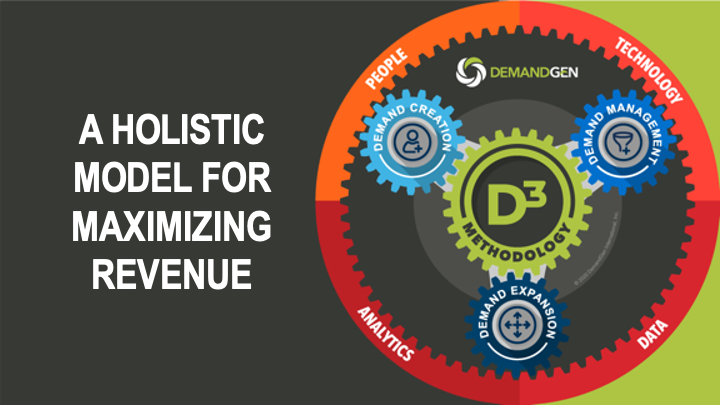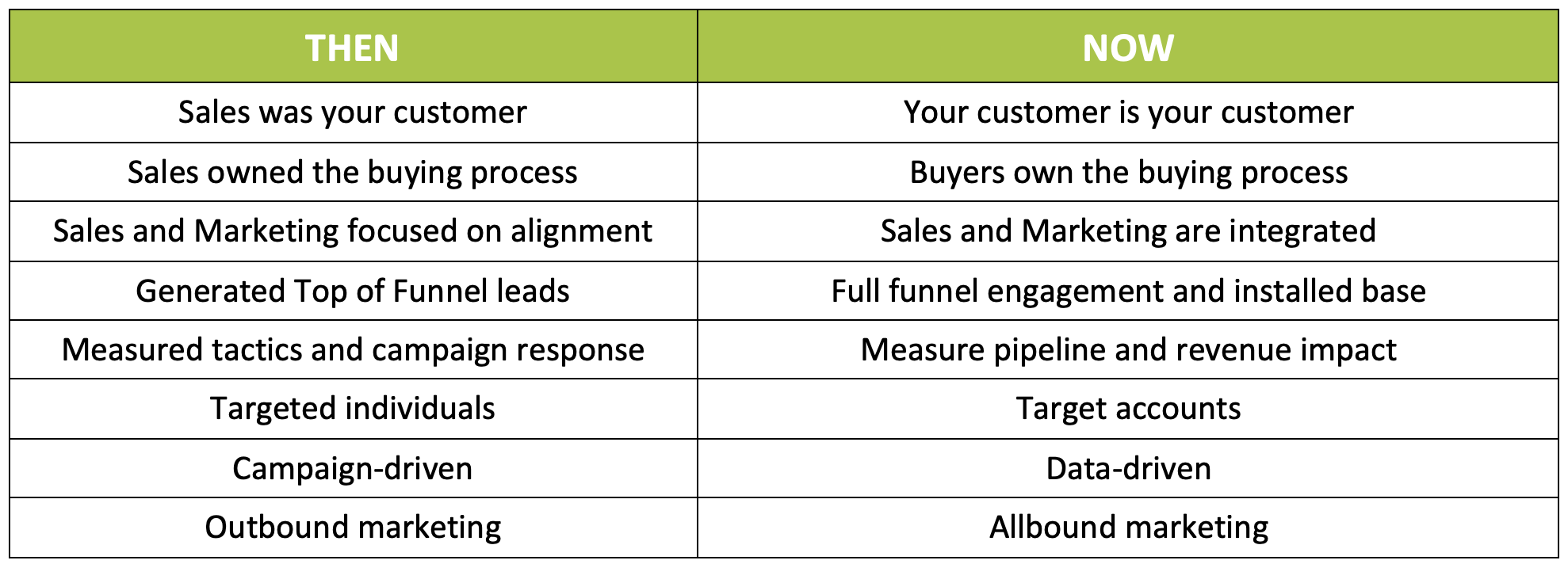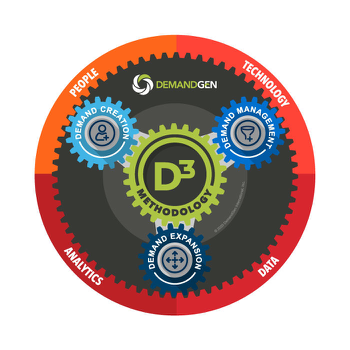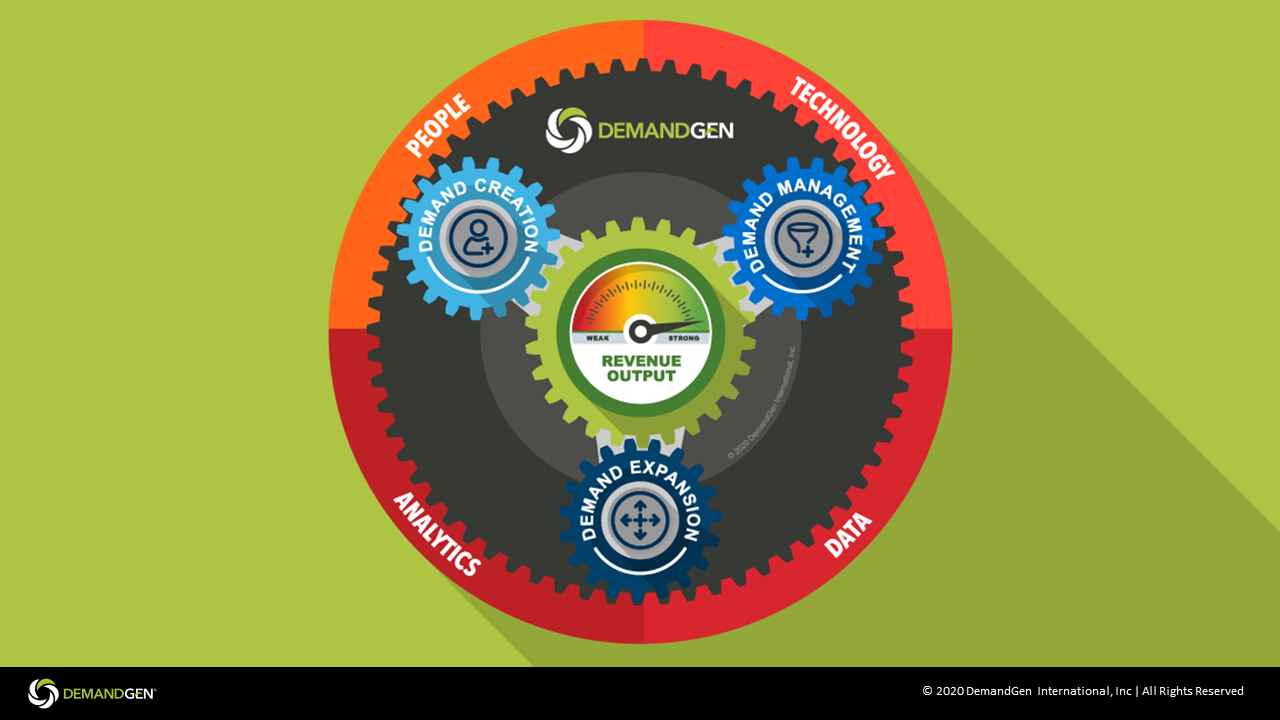The D3 Methodology — Your Guide to Digital Transformation

Over the past several years, the term digital transformation has become as common as the word unprecedented in 2020. Among the many things we will remember about 2020, it will be the year that made digital transformation and customer experience essential priorities for those late to the game — not a bad thing.
But what does it mean to digitally transform? What’s needed? Who’s involved? Where do you start?
The answers lie within the methodology you are about to discover. Before it’s unveiled, let’s contrast today’s environment with what was common for marketing and sales teams even just a few years ago. It’s these profound changes that compelled us to provide a modern methodology that identified and integrated the set of initiatives needed for transformation. Here’s a summary of dramatic changes that have taken place for Marketing:

If I tried to summarize what digital transformation ultimately looks like internally, I’d offer that it’s about Marketing and Sales having an “always-on” demand generation engine that generates new revenue while maximizing customer lifetime value. On the outside, the expectation from your customers is that you provide a phenomenal, frictionless customer experience. Assuming you’re head nodding, the only thing missing is a toolset that lays out all the areas and initiatives needed to reach this “new normal” as a cross-functional group. Congratulations. You found it:
The D3 Methodology
A Holistic Model for Maximizing Revenue

This methodology is purposefully built for marketing leaders to identify and prioritize the key initiatives necessary for revenue generation within their organization. As an added bonus, it also provides powerful, easy-to-understand visuals you can use to educate the rest of your organization on what Marketing actually does these days and how marketers help drive revenue. That’s of course unless you want them to think you are the arts and crafts department, send emails, run virtual events, post stuff online, and toss poorly qualified leads over the wall to Sales.
This toolset is designed to not only make the complexity of modern demand generation manageable, but also determine which initiatives to focus on to maximize revenue. Because, for Marketing, it’s all about revenue contribution and growth. And if it isn’t at your company yet, it really should be.

It was time for a new metaphor
Before I dive into the details, I feel it’s important to explain how — and why — we came up with the visuals for The D3 Methodology. We felt it was extremely important for this methodology to have a visual representation that pulled everything together neatly and would serve as a phenomenal — and realistic — metaphor.
The waterfall
About 13 years ago, when I first discovered the SiriusDecisions Demand Waterfall , I immediately recognized the value of having a shared taxonomy for Marketing and Sales. It’s turned the SiriusDecisions’ PowerPoint slides into a real system. However, the waterfall metaphor never actually sat well with me. In a waterfall, everything from the top flows to the bottom. That is hardly the case for demand generation. Not to mention, every time I saw it, I’d get that TLC song stuck in my head about not chasing them. So, rather than call it a waterfall, we call it a Demand Funnel. And if you search Google for Demand Funnel, you’ll find tons of content on how this lead management methodology works. But, lead management is only a piece of the digital transformation puzzle.
, I immediately recognized the value of having a shared taxonomy for Marketing and Sales. It’s turned the SiriusDecisions’ PowerPoint slides into a real system. However, the waterfall metaphor never actually sat well with me. In a waterfall, everything from the top flows to the bottom. That is hardly the case for demand generation. Not to mention, every time I saw it, I’d get that TLC song stuck in my head about not chasing them. So, rather than call it a waterfall, we call it a Demand Funnel. And if you search Google for Demand Funnel, you’ll find tons of content on how this lead management methodology works. But, lead management is only a piece of the digital transformation puzzle.
The simple gear system
Okay, so know waterfalls and funnels are simply a part of lead management. What then is going to work for a more holistic digital transformation visual? I kept hearing myself say “Revenue Engine.” Hmmm, engines have gears. Eight years ago, I wrote Manufacturing Demand: The Principles of Successful Lead Management. When you open my book, you’ll see an illustration of two enmeshed gears along with some explanatory content across from the Table of Contents (special shout out to my daughter Emily, who designed the illustration and book cover). When I wrote the book, I was thinking about lead management and achieving integration between Marketing and Sales, so the simple two-gears metaphor worked perfectly.
However, since then Marketing has added additional complexity into the fold since then — such as ABM, personalization, data, advanced analytics, an ever-expanding MarTech stack, and a laser focus on the entire customer experience — I realized we needed a new metaphor that not only talks about integration with Sales and Marketing, but also with Customer Service. The metaphor would also need to describe the strengths and limitations inherent in any system with so many moving parts.
So, with either a glass of wine or whisky in hand, I spent many a night thinking about a visual metaphor that would really support this comprehensive approach to digital transformation. Whether it was my inner voice saying “Revenue Engine” or my past usage of gears, we eventually found the perfect visual for the D3 Methodology.
The planetary gear system
I’d never even heard of a planetary gear system, but learned in my research that it’s a high-torque engine that provides incredible power and energy output to things like helicopters, automotive transmissions, and marine equipment. I researched so many different visuals and ideas, but nothing truly fit so well for always-on demand generation as the planetary gear system.

So, what makes a planetary gear system a phenomenal visual metaphor for maximizing revenue across Marketing, Sales, and Customer Service?
Unlike two simple gears meshing together via two to three teeth that can be easily worn and even break from strain, a planetary gear system is comprised of an outer housing ring, a bracket, several interconnected planetary gears, and a middle sun gear which is where power is output. The whole system is incredibly strong, durable, and powerful. I candidly like that the visual metaphor is evolutionary versus revolutionary. And unlike a waterfall, it actually illustrates the components needed for demand generation and their integration.
The D3 Methodology Planetary Gear System
Let’s break down the D3 Methodology planetary gear system’s key components so you can see how everything works together:
Outer ring gear: The outer ring gear (orange and red) represents the foundational elements essential for any high-functioning Demand Generation engine: people, technology, data, and analytics. It surrounds — and encases — the entire planetary gear system.
Inner planetary gears: The three planetary gears (blue) represent each discipline of Demand Generation. In order to maximize revenue output, you have to maximize all three:
- Demand Creation: How you engage via nurturing with new prospects to drive top-line engagement and create demand for your product or service
- Demand Management: Continuing the engagement with prospects to convert as many as possible into customers
- Demand Expansion: Expanding customer lifetime value through onboarding, retention, cross-sell, and upsell efforts
Bracket: The deceptively simple bracket (gray), which connects everything together, represents the tight integration needed between Sales, Marketing, and Customer Service for the revenue engine to function.
Central sun gear: The central sun gear (green), at the center of the system, symbolizes revenue output. In actual planetary gear systems, the sun gear is the output mechanism, and can do things like turn the blades on a helicopter or wheels on a car.
The planetary gear system perfectly symbolizes the complexity of Sales, Marketing, and Customer Service. It also visually represents the underlying dependencies on people, technology, data, and analytics. Everything must work together to keep the engine humming.
So, there you have it in one simple, yet powerful and sophisticated engine. You have the perfect visual representation of what’s needed for high-performance revenue growth.

How should you apply the D3 Methodology to your business?
Now that you have the big picture, when you dive into the toolsets we’ve created for you, you’ll find all the key foundational elements you need to undertake in people, technology, data, and analytics, as well as across each discipline of Demand Generation (Demand Creation, Demand Management, and Demand Expansion) to maximize revenue growth.
The D3 Methodology Overview that you can download below contains a complete set of slides that unveils all of the core initiatives that marketing at some point undertakes as part of digital transformation.
Let’s take a closer look at the Demand Creation phase. In the slide below, each gear tooth represents the key strategies and programs that support and optimize an organization’s Demand Creation efforts:

This next slide identifies all of the key Technology initiatives that will support your Demand Generation efforts and help maximize revenue growth:

The overview deck is designed to help marketing leaders see the entire set of initiatives and foster conversation around their current state against these initiatives. You can’t take on every initiative at once, and you might find you need to edit some of them to adapt the methodology to your specific business. For example, if ABM is not relevant to your marketing strategy, you may wish to remove references to ABM.
For those that have the PowerPoint version, we’ve made the tools editable so you can update the labels with your organization’s particular terminology and initiatives.
We’ve also designed the visuals so each individual element can be lit up when you present. Or, if you’re not quite ready to focus on certain areas, we’ve also created gray elements so you can cover them up for the time being.
Our goal was to create a toolset, along with a strong visual metaphor, so that marketing leadership can explain the complexity of Demand Generation to others across the organization.
Remember, friction is the enemy
Everything in life has its limitations or weaknesses. While the planetary gear system serves as an excellent metaphor for all the positives of this revenue engine, it also symbolizes the inherent weakness found in any engine: it requires a tremendous amount of lubrication to perform.
Because of all the moving parts and how powerful it is, if this engine does not have enough lubrication, it will seize up. That’s why, when it comes to digital transformation, you have to have a war-like mentality against friction in your customer experience.
If you apply the D3 Methodology across Sales, Marketing, and Customer Service, but you don’t remove the friction within your organization and with your buyers, the engine will either seize or underperform — and revenue output will be negatively impacted.
You can have the best technology, data, and even product. But if your customer experience is not exceptional, you’ll lose business to your competitors who offer a frictionless experience — even if they don’t have a better product.
In order to be successful in your digital transformation efforts, Marketing has to work with Sales and Customer Service to remove friction from the buying process and customer experience. Marketing, however, has not necessarily been in the business of removing friction from the buying process, and that needs to change.
No more Random Acts of Marketing
If you had any doubt about whether digital transformation was necessary, there’s no question anymore. If you ever wished you had a toolset to explain what’s going on in Marketing, and what initiatives need to be undertaken across Sales, Marketing, and Customer Service, you now have that. These tools are free and they’re priceless.
This methodology is our gift to the Marketing community. Marketing has become increasingly complex over the past decade. It was high time to create a new toolset that would help marketers make the complex manageable, prioritize what’s important, and dispel any mistaken illusion that we engage in Random Acts of Marketing.
It’s so essential in Marketing, where C-level executives don’t fully understand what’s happening in Marketing these days, and needing to happen, that you have a toolset to paint a picture of all the different initiatives and components coming together, so we’ve done that for you.
It’s time for all marketers to push past any lingering resistance within the business and become the revenue drivers we were meant to be. The first step is educating yourself so you can educate others.
To learn how the D3 Methodology can help you create a sustainable, always-on revenue engine, get the toolset and listen to our podcast series introducing the D3 Methodology:
D3 Methodology Tools
DemandGen Radio Podcast Episodes
Ep. #151: Changing the Narrative: How to Reposition the Discipline of Marketing
Ep. #152: Demand Creation Done Right
Ep. #163: The D3 Methodology: A Holistic Model for Maximizing Revenue
Ep. #167: The D3 Methodology: Building Strategic and Technical Skills
Ep. #173: The D3 Methodology: Essential Elements of Demand Creation
Ep. #175: The D3 Methodology: The 5 “C’s” of Marketing Analytics
Developing the D3 Methodology was a phenomenal team effort by some of the best minds in Marketing and Demand Generation. I want to give a special shout out to Carlos Hidalgo, Chief Strategy Officer, for all his priceless insights; to Tiffanie Lewis, our Director of Marketing; Rob Bonham, our Vice President of Sales; and to Tom Colby and Chris Bueller with Scorch Agency for turning these concepts into a visual masterpiece. The methodology was field tested with over a dozen CMOs, whose feedback we incorporated into subsequent iterations. The response to the model has been tremendous and it is really exciting to see so many of our clients leveraging it in their organizations.
We are always publishing content and resources to help you with the application of this methodology so here are some suggestions for next steps:
- Subscribe to the DemandGen Radio podcast so you get notified of new episodes
- Subscribe to the DemandGen Blog to get a treasure trove of helpful guidance and resources
- Subscribe to the DemandGen TV channel on YouTube
- Download the D3 Methodology Overview deck and get consider getting some coaching on it
(Don’t be shy. Have my team walk you through the main D3 Methodology deck so you learn the talk track if you plan to use it. Hit me up on LinkedIn and I’ll arrange a coaching session at no cost. Really.)
And finally, if you lack the resources, expertise, or bandwidth to undertake these initiatives internally, consider my amazing team at DemandGen who is here to provide your team with guidance and digital transformation expertise to support your demand generation initiatives. Connect with us online.
 For more than 20 years, David Lewis has been a pioneering innovator in digital marketing and has overseen marketing for some of Silicon Valley’s leading technology firms. He founded DemandGen in 2007 to build the worlds’ first marketing technology agency.
For more than 20 years, David Lewis has been a pioneering innovator in digital marketing and has overseen marketing for some of Silicon Valley’s leading technology firms. He founded DemandGen in 2007 to build the worlds’ first marketing technology agency.
For the past decade, David and his team at DemandGen have been at the forefront of the transformation taking place in marketing by helping hundreds of the top sales and marketing teams around the world incorporate sales and marketing technology to drive growth. David is an accomplished industry speaker, thought leader, author, and host the of DemandGen Radio, a bi-weekly podcast devoted to educating marketing professionals on the best technologies and methods for driving growth. His ground-breaking work on the transformation of marketing and sales is at the heart of his #1 book on Lead Management, Manufacturing Demand: The Principles of Successful Lead Management.
The post The D3 Methodology — Your Guide to Digital Transformation appeared first on DemandGen.
